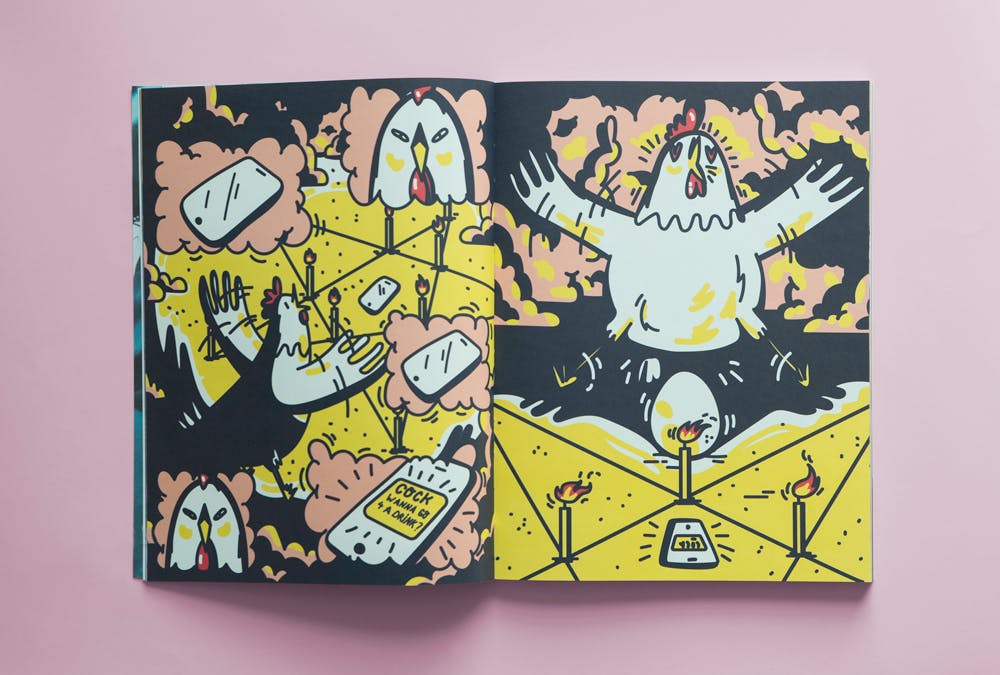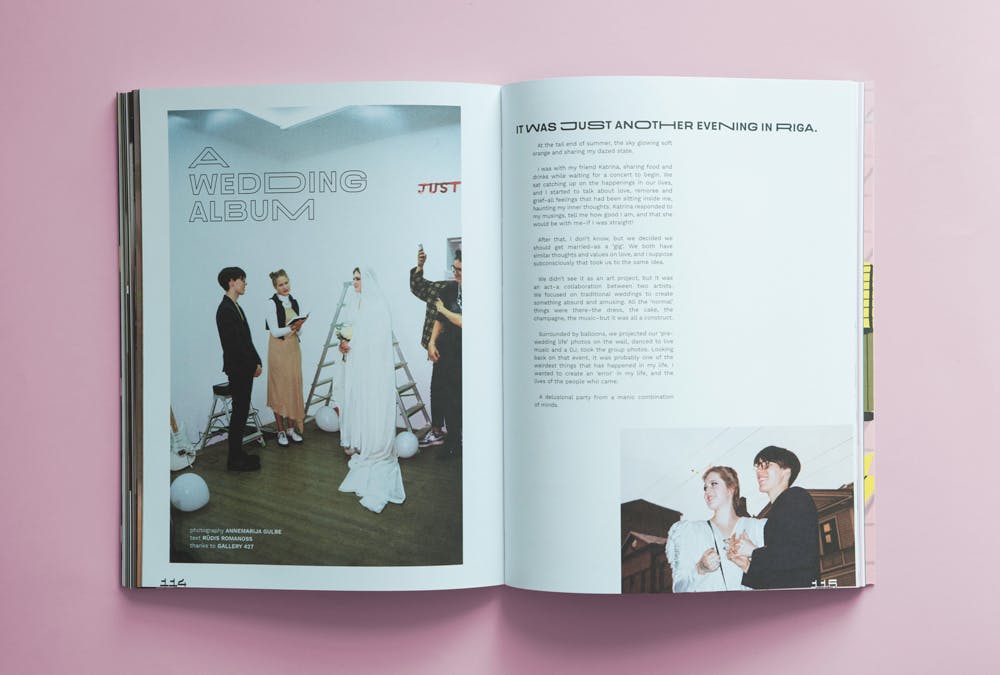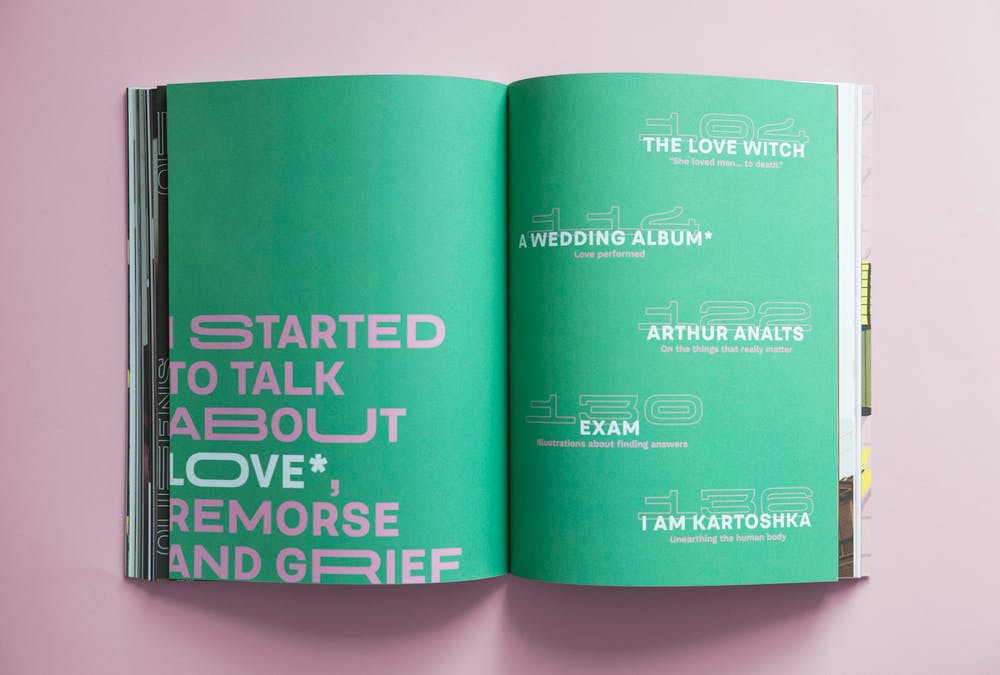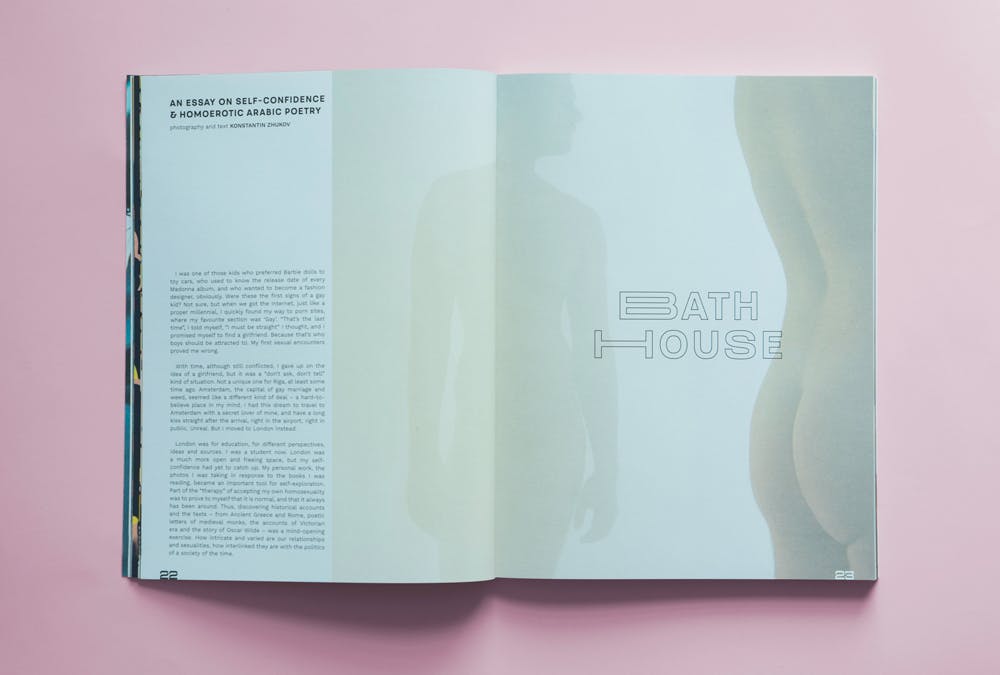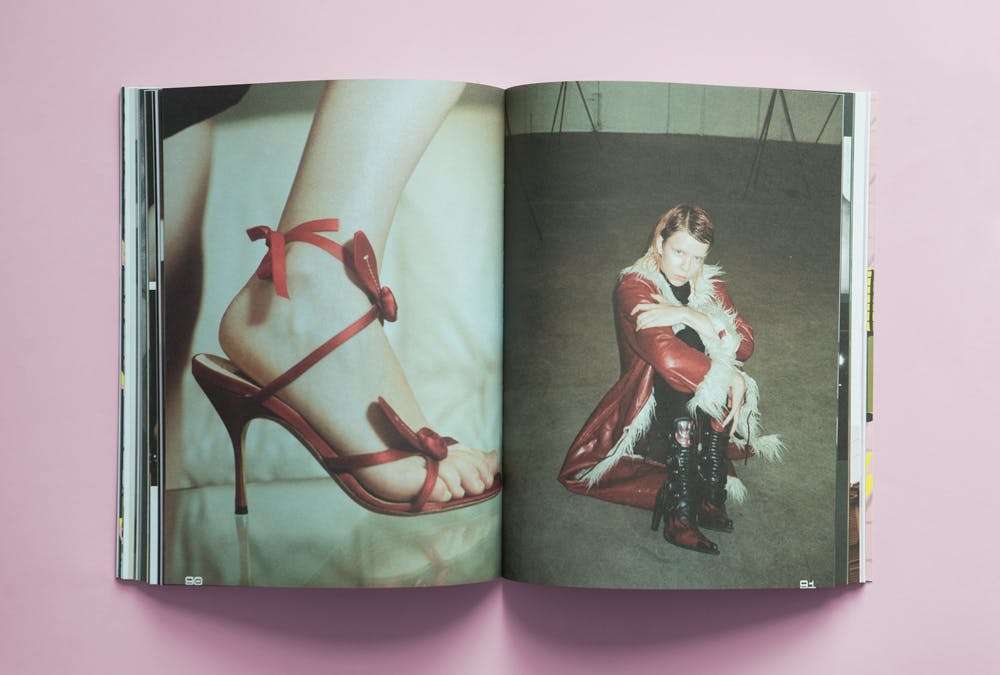Jezga is taking on sexuality in the shadow of the Eastern Bloc
Sex and gender can feel overdone, as indie magazine themes go. Or emptily trendy. Which is why Latvian-born Jezga’s unique focus — on youth culture in the former Eastern Bloc — is intriguing. The contributors to this thick, peach-coloured ‘love, sex, gender’ issue are thinking through sexuality in the shadow of the region’s Soviet years. The most unusual results include photographs of an 80-year-old Polish drag queen, who, in the Communist era, would perform privately for the cultural elite of the day; and a poem ascribing the speaker’s “juicy booty” to a genetic reaction to hunger (“Grandmother Ginta grew up in a gulag”).
Towards the end of the magazine, Riga-based sculptor Mark Sun-Roz asks the question, “If everything was allowed, would anything be interesting?” That feels like an apt tag-line for the issue itself, which platforms art created in conflict with the dominant culture, and in some cases, the law. Touching on gay saunas, Middle Eastern poetry and bottoms, we asked the Editor-in-Chief Anna Rosova to guide us through the issue.
Bottoms
“We sought out artists who weren’t scared of showcasing sexuality in their work, and did so with a purpose. Poet Eliza Legzdina explores her heritage, and her female sexuality, fearlessly combining the two. There is still the lingering idea in parts of Eastern Europe that a woman needs to be calm, modest and mysterious — if you’re too sexual and open, it’s looked down upon. We wanted to challenge these stereotypes, and tackle the perception that nudity is only for porn or gentlemen’s clubs.
Sculptor Mark Sun-Roz told us that a sculpture of a woman’s body, created by a fellow student, was removed from an art exhibition as the organisers deemed it to be pornographic. Where else can we explore the forbidden, if not in art? But then again, why are bodies and sexuality such ‘forbidden’ things? When talking to jeweller Madara Keidza, she noted that sex is addressed as ‘that thing’ by her parents’ generation — sexuality is being suppressed almost on the same level as religion was during the Soviet era. All of the artists featured have their own individual reasons as to why they choose to work with the body, or sexuality — but when you gather all that work together in one place, it’s almost like a documentation of a younger generation breaking free.”
Queens of Eastern Europe
“In the series ‘Queens of Eastern Europe’, photographer Sebastian Franke travels to Latvia, Poland, Ukraine, Russia, Hungary and Serbia to explore their respective drag cultures, and the social and political realities that inform them. When thinking of a drag queen, most people tend to have a certain image in our minds, affected by cultural phenomena such as ‘Ru-Paul’s Drag Race’. So it felt refreshing to meet drag queens like Lula, who is 80 years old, and tells tales of entertaining the cultural elite behind closed doors during the communist era, when such activities could be heavily punished.
While researching for this issue, we found studies indicating that 72% of Poles are against same sex marriage, and more than 80% of people questioned in Hungary, Latvia and Lithuania are against same-sex adoption. Compared to the United Kingdom, where 73% say that they agree with same-sex adoption, it is safe to say that in most Eastern European countries there is still a heavy stigma applied to non-normative relationships. These traditional conservative values extend throughout the majority of society and apply to any who challenge ‘typical’ gender rules — which of course the drag queens of Eastern Europe do.”
Are revealed to you.
All become radiantly manifest.
Feast your eyes without restraint!
-- In the Bath-house, Abu Nuwas (756-814)
Bath-houses
“While it might seem odd to feature homoerotic Middle Eastern poetry from the ninth-century in a magazine about emerging talent from Eastern Europe, we try to be as collaborative as possible with our contributors — and when Konstantin Zhukov approached us with the concept for this story it just hit the mark for the issue perfectly.
As discussed by Konstantin in his essay, gay saunas might not be experiencing peak popularity in the present day — but they have existed throughout history and been a staple of queer discourse. From the bath houses referenced in ninth-century poetry, to the discreet saunas of closeted noughties Riga, to the anonymity of today’s online hookups — those ideas of mystery and secrecy permeate the community across eras. Comparing and contrasting different time periods and places gave a real illustration of how certain perceptions of the past and other societies can be erroneous. As Konstantin writes, ‘while the Middle East is often believed to be an inherently ‘backwards’ society by Western standards, such emancipated poetry would have earned a European writer of the same era far more dire consequences.'”
Wedding Albums
“‘The Wedding Album’ is a photographic documentation of a performance, shot by a young photographer, Annemarija Gulbe, who we also worked with in our previous issue. This is a performance of a wedding: as one of the artists, Rūdis, writes, ‘All the “normal” things were there — the dress, the cake, the champagne, the music — but it was all a construct.’ In many post-Soviet countries, marriage still holds a high traditional value, but being gay does not fit into that equation. Currently, same-sex couples are still not allowed to marry or adopt in Latvia, where the performance took place. At the time, Annemarija was also working on a personal project called ‘Love Re-Search’, questioning the process of love and why she has never looked for it herself — searching for answers while documenting and observing how others try to find it.”


